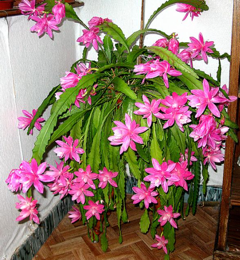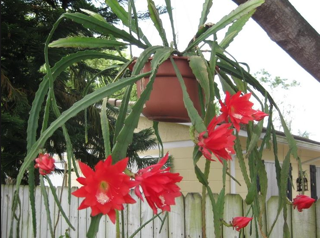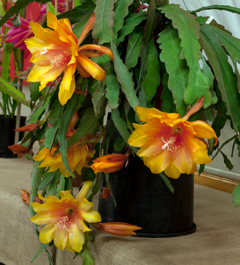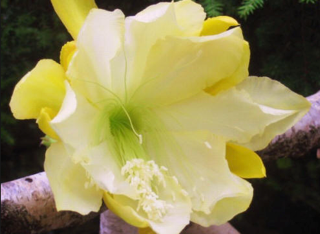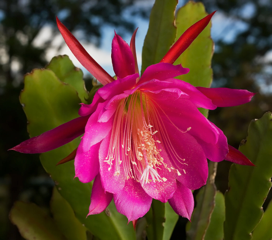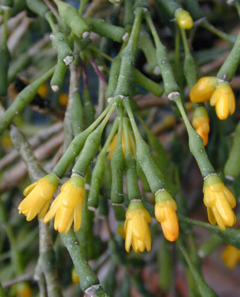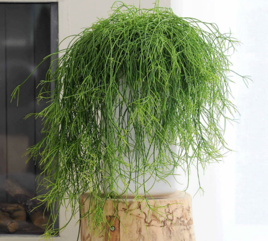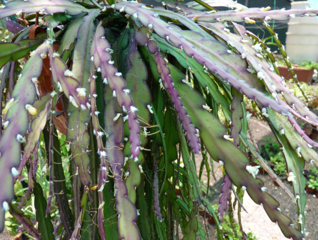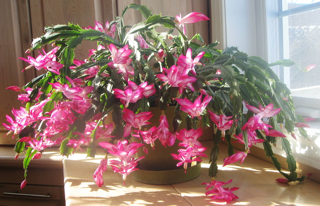Submitted by: Jim Tanner
Epiphytic cacti have a place in every collection. They are easy to grow, requiring remarkably little in the way of care, in general have few spines, and many reward the grower with either a spectacular show of flowers, or a year round display of gracefully curving foliage.
Epiphytic cacti like a richer mix than most ground loving cacti. A frequently used potting mix includes equal parts of potting soil, bark and pumice. Good drainage in the mix is important for good growth. Regular feeding, and a constant supply of moisture, particularly during the growing season are also important. They all like moving air, and do best outdoors, particularly in the summer. Many will get tip damage if left in temperatures below freezing. In a protected area, they can be left outdoors all winter, and do well with our winter rains.
Epiphytic cacti are all easily propagated from either cuttings or seed. Cuttings can be taken any time the plant is in active growth, spring being best, but any time during the summer and early fall will also work. Thin stemmed epiphytes, such as most of the Rhipsalis can be planted immediately. Thicker leafed genera should be allowed to dry for a day or two before planting. Cuttings must be placed in moist potting mix, and kept in the shade for at least a month, but best until active new growth appears. When taking cuttings, remember that the plant will have to live on the stored energy in the stem, and a larger piece, within reason, is better than a small one.
LATIN LOOKUP – Loquerisne Latine (Do you speak Latin)?
The meanings of latin plant names on this page – from http://davesgarden.com/guides/botanary/
- baccifera [bak-IF-er-uh]
Bearing berries. - Disocactus [dy-soh-KAK-tus]
From the Greek dis (twice) isos (equal) and cactus; referring to the equal number of sepals and petals of the flower. - Epiphyllum [ep-ih-FYE-lum]
Upon the leaf, referring to the flowers appearing to bloom on the leaves. - Hatiora [hat-ee-OR-uh]
An anagram of Hariota, another genus, named for Thomas Hariot, 16th century British mathematician and cartographer in America. - oxypetalum [oks-ee-PET-al-um]
Sharp petals. - phyllanthoides [fil-lan-THOY-deez]
Resembles Phyllanthus (from the Greek meaning flower leaf, as it appears to flower from a leaf like stem). - Rhipsalis [RIP-sa-lis]
From the Greek rhips (wicker-work, plaiting) referring to the pliable branches. - salicornioides [sal-eye-korn-ee-OY-deez]
Resembles Salicornia, (from the Greek sal, salt and cornus, horn; referring to the hornlike branches of the saline plants). - Schlumbergera [shlum-BER-ger-uh, shlum-ber-GER-uh]
Named for Frederic Schlumberger, 19th century French gardener and cacti collector. - truncata [trunk-AH-tuh]
Cut off.

